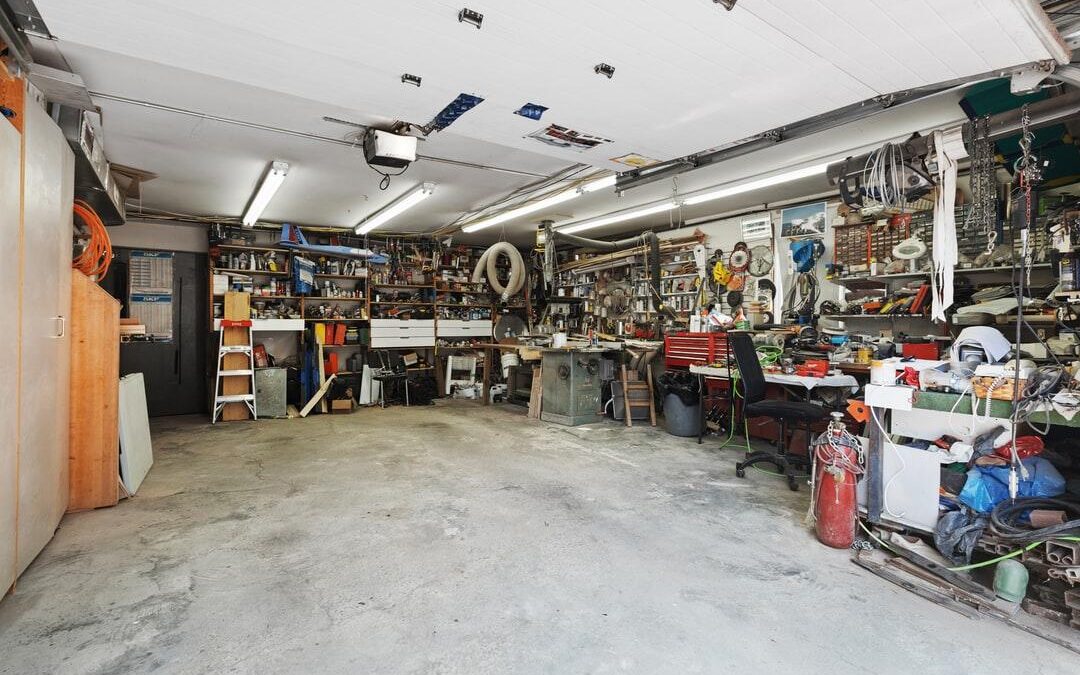If you own a home, you might not think much about the garage beyond its usual use for parking cars and storing extra items. But here’s a surprising fact: close to half of residential buildings in the United States have mold issues, and garages are one of the places where mold is often present.
It doesn’t just make your garage look bad-it can also lead to health issues and structural damage if not handled quickly. In this blog post, your expert team at Elite Mold Services will look at why mold in a garage grows, how to spot it, and what you can do to prevent and remove it. Let’s get started.
Causes of Mold in Garages
Mold in garages often starts with one key factor: moisture. Garages are prone to leaks, which can come from roofs, walls, or even the garage door itself. These leaks create damp spots where mold can thrive.
Humidity is another big problem, especially in areas with warm, moist climates. If a garage has poor insulation, temperature changes can lead to condensation on walls and floors, providing the moisture mold needs.
Poor ventilation is another common cause. Garages often lack windows or other ventilation points, which means air doesn’t circulate well. When air is stagnant, moisture stays put, making it easier for mold to grow.
Finally, mold needs something to feed on, and garages usually have plenty of organic materials. Wood, cardboard, and even old newspapers are perfect sources of food for mold.
Signs of Mold in Garages
Spotting mold in your garage might seem tricky at first, but there are a few key signs to look out for. The most obvious is visual, so if you notice black, green, or even white patches on your garage walls, floors, or ceiling, you likely have mold. These spots can start small but grow quickly, especially if there’s a constant source of moisture.
Another telltale sign of mold is a musty odor. Mold has a distinct, earthy smell that can be quite strong, even if you can’t see any mold yet. If you notice this smell every time you enter your garage, it’s a good indicator that mold might be hiding somewhere.
Mold doesn’t just affect your garage-it can impact your health, too. Common health symptoms include allergies, respiratory issues like coughing or wheezing, or even headaches. If you or your family experience these symptoms when spending time in or near the garage, it’s worth investigating further.
When you suspect mold, a professional inspection is a smart move. Companies like Elite Mold Services in Orlando offer comprehensive mold inspections and testing to determine the extent and cause of mold in your garage. We can help you understand how severe the problem is and guide you on the best course of action for removal and mold prevention.
Risks of Mold in Garages
As we have highlighted above, mold in the garage isn’t just unsightly; it can lead to serious problems for both your health and your property. The health risks are among the most concerning. Mold releases spores into the air, which can cause allergic reactions in some people.
If these spores enter your home through the garage, they can trigger respiratory issues. For those with asthma or other respiratory conditions, mold exposure can be particularly harmful.
Beyond health risks, mold in garages can also cause structural damage. When mold grows on walls, floors, or ceilings, it can weaken these structures over time. This can lead to cracks, warping, or even more severe damage if not addressed promptly. In the worst cases, extensive mold growth can require major repairs to fix the affected areas.
Finally, mold can ruin items stored in the garage. Many people use their garage for storage, keeping things like cardboard boxes, old furniture, and other items that mold can easily infest.
Once mold gets into these materials, it’s hard to remove and often requires throwing away the damaged items. This can be both costly and frustrating, especially if the items have sentimental value.
How to Remove Mold in Garages
Removing mold from your garage requires a careful approach to ensure safety and effectiveness. Start with safety first by wearing protective gear like gloves, a mask, and goggles to avoid inhaling mold spores or getting them on your skin.
Next, clean the affected areas. Use mold-specific cleaners or a solution of one part bleach to ten parts water. Scrub the moldy surfaces thoroughly, ensuring all visible mold is removed.
If any items are contaminated and can’t be cleaned, dispose of them safely in sealed bags. Once cleaning is done, dry the garage thoroughly. Use fans, dehumidifiers, or open doors to ensure there’s no lingering moisture. These steps can help you effectively remove mold and prevent it from coming back.
When to Call a Professional
While you can handle small mold issues on your own, there are times when it’s best to call in the experts. Large infestations are the most obvious reason.
If mold covers a large area, for example several square feet or more, you’ll need professional help. Trying to clean large patches yourself can be risky and might not be thorough enough to prevent future growth.
Persistent mold can also be a sign of an underlying problem, like a hidden leak or poor ventilation. If you’ve cleaned the mold but it keeps coming back, it’s time to get professional help to find and fix the root cause.
Elite Mold Services offers supervision of remediation works to ensure that mold removal is done safely and effectively. We make sure that remediation works meet safety standards and is thorough enough to prevent future mold problems.
Professional Mold Services in Orlando, FL
Mold in a garage is a problem that can affect your health, damage your home, and ruin your belongings. By understanding the causes, signs, and risks, you can take steps to prevent and address mold issues.
Elite Mold Services offers mold inspections and testing to determine the extent of the problem. We also supervise remediation works to ensure the job is done safely and thoroughly. If you suspect mold in your garage, contact us for expert advice and solutions.

